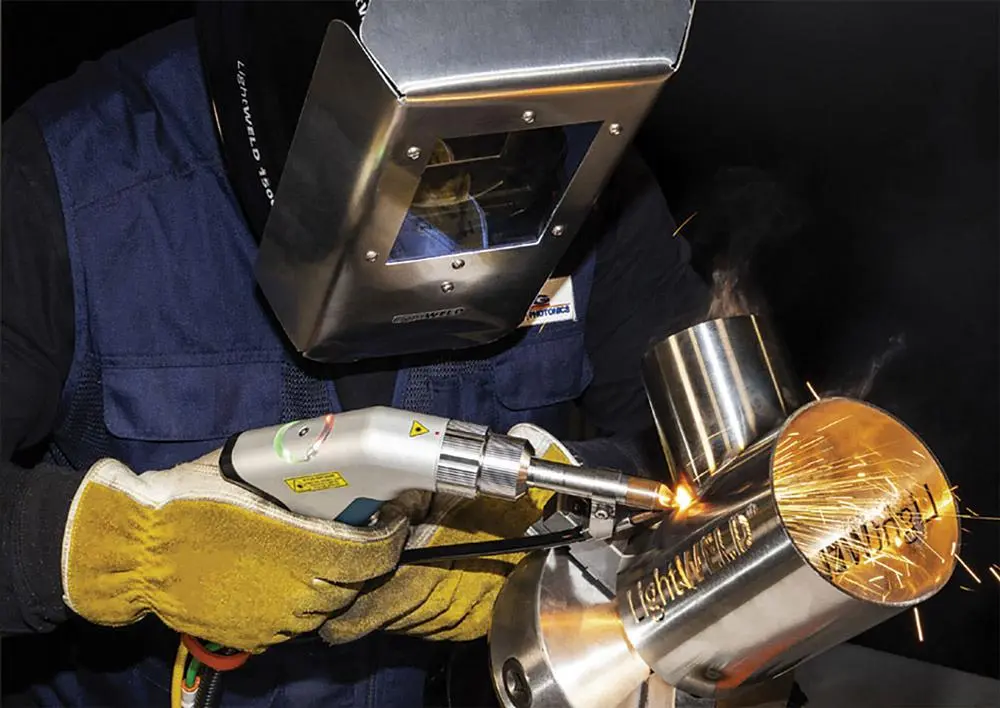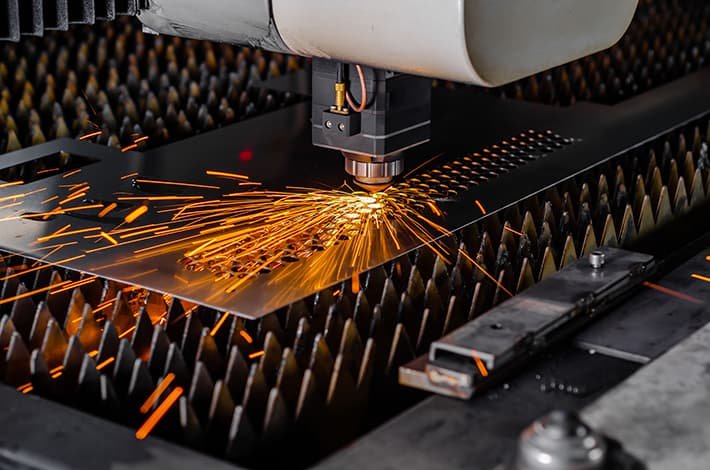Photonics Applications Column
As one of the most advanced material processing methods available today, laser cutting has become increasingly prevalent across various industries. This article explores the fundamental principles, operational advantages, and key applications of laser cutting, offering insights especially relevant to buyers and procurement professionals evaluating high-precision cutting solutions.
What Is Laser?
Laser, short for “Light Amplification by Stimulated Emission of Radiation,” refers to a highly focused and coherent beam of light characterized by:
- High intensity
- High brightness
- Monochromaticity (single wavelength)
- Excellent directionality
- Long coherence length

When a laser beam strikes the surface of a material, its energy is absorbed and rapidly converted into heat. This leads to a sharp rise in localized temperature—sufficient to melt, vaporize, or sublimate the material. The result is a small crater formed on the surface. The vaporized material and molten metal are expelled by the resulting pressure and assisted gas flow, generating a precise and clean cut.
How Laser Is Generated
Laser generation involves achieving population inversion within a gain medium. This medium emits photons via stimulated emission. These photons are then amplified and filtered in an optical resonator cavity to produce a laser beam with exceptional directionality, monochromaticity, and intensity. This highly focused energy source is what enables laser cutting to perform with unmatched accuracy.
Principle of Laser Cutting
Laser cutting is a thermal process that uses a high-energy-density laser beam as a heat source to cut through materials. After the laser beam is focused, the energy density at the focal point becomes extremely high. When directed onto a material’s surface, the energy is absorbed, causing the temperature to rise sharply—reaching the material’s melting point, boiling point, or sublimation threshold.
- Metals: Laser energy melts the metal, while auxiliary gases (e.g., oxygen, nitrogen, compressed air) blow away the molten material from the cutting seam.
- Non-metals: Materials such as wood, plastics, or ceramics may vaporize directly under the heat, completing the cutting process without melting.
This combination of thermal precision and gas-assisted removal defines the modern laser cutting process.
Key Advantages of Laser Cutting
Compared with conventional thermal cutting methods (such as flame or plasma cutting), laser cutting offers several significant advantages:
1. Superior Cutting Quality
- Narrow kerf width 그리고 minimal heat-affected zone (HAZ) are hallmarks of laser cutting.
- The HAZ typically ranges between 0.1 mm and 0.5 mm—critical for applications where material integrity is vital, such as in aerospace-grade metals.
2. 높은 정밀도
- Laser cutters can achieve positioning accuracy of ±0.1 mm or better.
- This level of precision is ideal for industries like electronics and medical device manufacturing, where intricate geometries and minimal tolerances are essential.
3. High Cutting Speed
- Laser cutting significantly outpaces traditional cutting methods.
- For instance, a 1–6 mm carbon steel sheet can be cut at speeds of several meters per minute, improving throughput and reducing labor time.
4. Wide Material Compatibility
Laser cutting is highly versatile and suitable for both metallic and non-metallic materials:
- Metals: Carbon steel, stainless steel, aluminum alloys, titanium
- Non-metals: Plastics, ceramics, wood, glass, and rubber
- Composites: CFRP, GFRP, and laminated materials
With proper adjustment of laser parameters and assist gases, consistent and high-quality cuts can be achieved across these substrates.
5. Non-Contact Process
- The cutting head does not make contact with the workpiece, reducing wear and eliminating mechanical stress.
- Tooling is unnecessary—cutting paths are digitally controlled, allowing quick configuration changes for different shapes and materials.
- The process is clean, low-noise, and vibration-free, making it ideal for automated production environments.

Limitations of Laser Cutting
While laser cutting offers many benefits, its capabilities are limited by the laser source’s power and the equipment’s mechanical design:
- Material Thickness: Most systems are optimized for thin to medium-thickness sheets and pipes.
- Decreased Speed with Thickness: As material thickness increases, cutting speed declines and edge quality may deteriorate.
- Equipment Cost: High-precision laser systems with sufficient power and automation features can be a substantial capital investment.
Understanding these constraints is essential for procurement teams considering laser systems for specific industrial applications.
Industrial Applications of Laser Cutting
Metalworking & Fabrication
Laser cutting is extensively used in general metal fabrication for cutting parts like gears, brackets, chassis, and structural components.
- Automotive Manufacturing: Cutting body panels, chassis parts, and engine components
- Shipbuilding: Processing steel plates for hull structures
- Industrial Machinery: Producing precision components and enclosures
Electronics Manufacturing
- Used for cutting printed circuit boards (PCBs) with high precision
- Suitable for separating microelectronic components and enclosures
- Enables miniaturized and intricate component layouts
Advertising & Decorative Arts
- Allows intricate pattern cutting in stainless steel, acrylic, and wood for signage and interior décor
- Ideal for one-off or short-run custom jobs due to digital programming flexibility
Packaging Industry
- Cuts carton designs, plastic films, and laminated materials
- Can engrave brand logos or custom text directly on packaging substrates, enhancing product presentation
Aerospace & Aviation
- Used for cutting critical structural parts such as fuselage sections and wing spars
- Ensures edge quality and precision that comply with aerospace standards
- Also applied to engine components that require exacting tolerances and minimal heat distortion
Conclusion
Laser cutting has become a cornerstone of modern industrial manufacturing, delivering unmatched precision, flexibility, and quality across a wide array of materials. For procurement professionals, understanding the operational principles and performance characteristics of laser cutting systems is essential to making informed investment decisions. Whether evaluating a system for thin-sheet processing or precision part fabrication, laser technology presents a high-value option that combines speed, accuracy, and scalability.
Citations and References
- European Photonics Industry Consortium (EPIC)
- “Laser Cutting Fundamentals,” Laser Institute of America
- “Application of Laser Technology in Modern Manufacturing,” Journal of Manufacturing Processes
- TRUMPF, Bystronic, and Han’s Laser product brochures
- ISO 9013: Quality classification for thermal cuts



